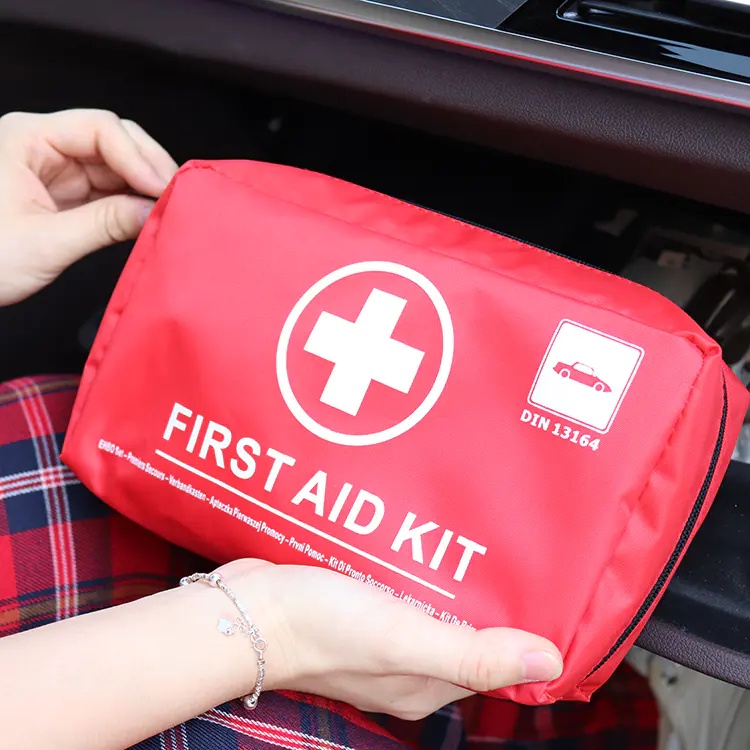When preparing for road journeys, safety extends beyond careful driving and vehicle maintenance. In many European countries, carrying a Din13164 First Aid Kit is a requirement for cars, buses, and commercial vehicles. More importantly, this kit ensures that in case of an accident, travelers have access to essential supplies that allow them to respond quickly and responsibly. Understanding what is included in this kit and how to properly pack it for long-distance travel can make a significant difference during emergencies.

The Din13164 First Aid Kit is based on a European standard designed to ensure consistency and reliability across all vehicles. It provides the necessary medical items to deal with minor injuries as well as initial response for more serious situations. The kit can be divided into several groups of contents that cover different aspects of emergency care.
One of the primary purposes of the kit is to stop bleeding and protect wounds. Items in this category include sterile dressings, adhesive plasters, and bandages. These are vital for treating cuts, abrasions, or injuries caused by road accidents. By covering and protecting the injured area, they help prevent infection and stabilize the condition until professional assistance is available.
Beyond simple wound treatment, some accidents may involve broken bones, sprains, or injuries that require immobilization. To handle these cases, the kit provides triangular bandages and fastening materials that can be used to support and stabilize limbs. This prevents unnecessary movement that might worsen the injury. Although basic, these tools allow non-professionals to provide meaningful support before advanced medical care is delivered.
The kit also contains general tools that are essential in any emergency situation. Scissors allow users to cut clothing or tape quickly, disposable gloves protect both the caregiver and the patient, and a first aid instruction leaflet provides step-by-step guidance. These elements ensure that even people without medical experience can take the right actions under pressure.
| Category | Purpose | Examples of Contents |
|---|---|---|
| Wound Care | Protect and treat bleeding or skin injuries | Dressings, adhesive plasters, bandages |
| Immobilization & Safety | Provide stability and reduce further harm | Triangular bandages, fastening materials |
| General Support | Assist with handling and organization | Gloves, scissors, first aid instructions |
Together, these categories make the Din13164 kit a well-rounded tool that addresses the most common situations encountered during road incidents.
Owning a kit is not enough; the way it is packed, stored, and maintained determines its actual effectiveness. When traveling long distances, these considerations become even more important, as help may take longer to arrive.
During an emergency, every second counts. A kit stored at the bottom of a trunk or hidden under luggage may be difficult to access. For this reason, it is advisable to keep it in a visible and easy-to-reach location, such as the glove compartment or a marked side storage box. This ensures that passengers or bystanders can access it without delay.
Emergency situations are stressful, and searching through a messy kit wastes valuable time. Organizing items by type—such as wound dressings in one section, bandages in another, and general tools in a separate pouch—helps users quickly identify what they need. Transparent bags or labeled compartments are practical ways to maintain order.
Medical supplies are sensitive to time and storage conditions. Sterile dressings may lose their protective quality after expiration, and adhesive tapes can become less effective if exposed to heat or moisture. Regularly checking the kit and replacing expired or damaged items is an important part of preparation, especially before setting off on long trips.
Although the Din13164 kit already includes the required standard items, travelers may choose to carry additional supplies for personal needs. For example, families with children may include extra plasters, while long-distance drivers might add cooling packs for minor sprains. These optional items should be kept separate so they do not interfere with the required contents.
Even the best-prepared kit may be less effective if the user does not know how to apply its contents. Spending a few minutes to review the instruction leaflet or practicing simple techniques—such as tying a triangular bandage—can build confidence. When a real emergency occurs, familiarity with the kit ensures quicker and more effective action.
Accidents do not always happen close to home. On highways, mountain roads, or during cross-border travel, immediate medical care may not be available. The Din13164 First Aid Kit ensures that drivers and passengers have the means to take initial steps that could reduce the severity of injuries. From stopping bleeding to stabilizing a fracture, the kit empowers ordinary travelers to act responsibly in unexpected situations.
Being prepared also brings peace of mind. Knowing that the kit is properly packed and up to date allows drivers to focus on the journey ahead without worrying about compliance or readiness. For long trips, this confidence is as important as carrying spare tires, tools, or navigation aids.
For businesses and distributors looking for dependable Din13164 First Aid Kits, Yonoel offers a trusted manufacturing solution. With experience in designing and producing first aid products, the factory provides kits that meet European standards while focusing on practical details. Their approach combines compliance with user-friendly design, ensuring that each kit supports real-life needs on the road.
Yonoel also supplies a wide range of first aid solutions beyond the Din13164 standard, including kits for workplaces, outdoor activities, and travel. By maintaining consistent quality and working closely with partners, the company delivers products that add value for both professional clients and end users. To learn more about their products and explore available options, you can visit yonoelfirstaid.